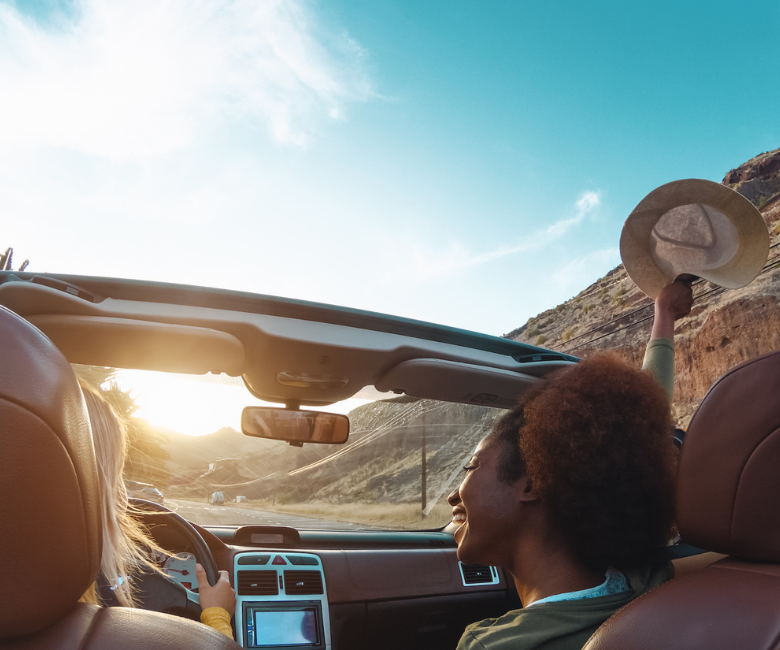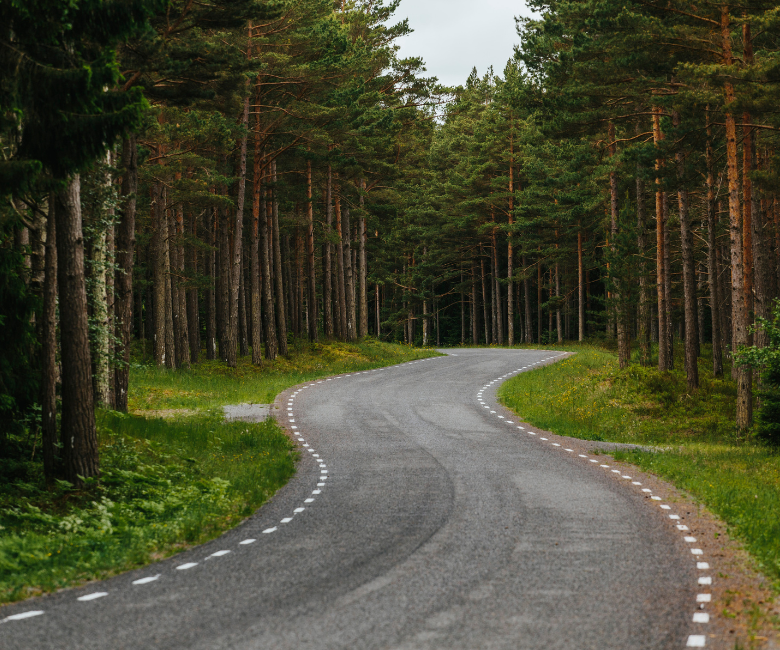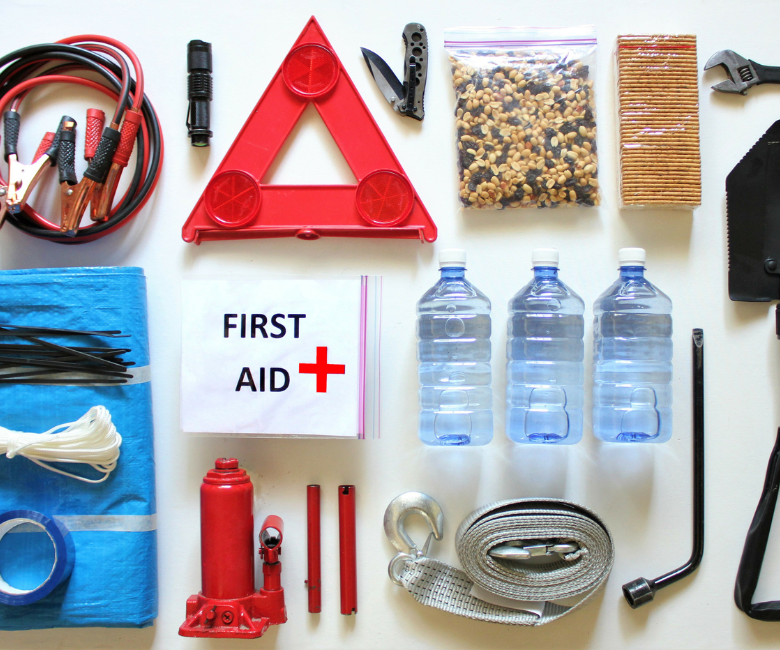
The Ultimate Road Trip Checklist
- Fun With Cars
- PEAK
- May 22, 2024
How to prep your car, what to include in a roadside emergency kit, what to do if your car breaks down, and what essentials to pack.
It's road trip season! Adventure awaits, and proper planning is the key to having a great experience. While there's no way of knowing what surprises might be in store, this checklist will ensure that you — and your vehicle — are ready to handle any challenge that might arise.


Think Ahead
As the philosopher Ralph Waldo Emerson famously said, "It's not the destination. It's the journey." True, though the destination can be pretty important when it comes to planning a road trip. From car prep and packing essentials to preparation for unexpected conditions, a little planning can go a long way toward ensuring a smooth trip. Start with these core considerations:
What should I bring?
Before we get into car prep, there are some essentials that should go straight to the top of your packing list. No matter where you’re going, or when, don’t leave home without:
- Driver’s license, registration and car insurance
- Health insurance card
- Phone number for roadside assistance
- Road atlas — essential when you’re out of range
- Cash
- Swiss Army knife or multitool
- Wipes — good for everything from your face to your dash
- Hand sanitizer
- Umbrella
- Microfiber towel
Equally essential? A swimsuit — no matter the season. You never know when you’ll discover a secret swimming hole, stumble upon hot springs or find yourself in a hot tub.
Where are you going?
If you're headed to a familiar destination with lots of civilization along the way, you can probably count on having access to help if something goes awry. The same may not be true if you're going somewhere remote like a national park, or to an extreme environment like Death Valley or off-road in the Arizona desert. Do your research ahead of time, and always be prepared for unexpected conditions.
Consider a family who took a summer road trip to Yellowstone. Given the time of year, they weren't expecting to encounter eight inches of snow on the ground. Nobody had warm clothes, the car slipped around the unexpectedly wintry roads, and the family ended up spending hundreds of extra dollars to deal with the situation.
Plot your route well in advance, and research the variety of weather and road conditions you could encounter between your origin and destination. Think about worst-case scenarios, then make lists of supplies that will help you deal with those situations.
For example, pack a set of tire chains if you might hit snow in the mountains, or traction aids like road salt, sand, or no-clump cat litter. On the flip side, you’ll want a wide-brimmed hat, sunglasses, and lots of extra sunscreen and drinking water if you're going deep into the desert.


Who's coming?
Special considerations apply if young kids are part of your travel plans. You'll need both entertainment and practical items to ward off an endless chorus of, "Are we there yet?" For entertainment, consider things like:
- Activity books
- Word puzzles
- Tablets or laptops for music, videos, and interactive games
On the practical side of things, you'll want:
- Old, comfortable clothes for the kids to wear in the car
- Plenty of snacks and drinks
- Toilet paper and a portable plastic potty
Pro tip: let your kids help you pack. They'll make sure you don't overlook any essential favorites that might make life easier during long stretches of driving.
Prep Your Vehicle
As departure day approaches, make sure your car is ready for the road. Our spring maintenance checklist has a complete breakdown of routine maintenance essentials. For a quick cheat sheet, be sure to check the following, at minimum:
Tire tread, pressure, and air level
You can quickly check the depth of your tire tread using a penny. Position a penny so that Abraham Lincoln's head points down into your tire treads. If you can see Lincoln's entire head, your treads are worn out and you should replace your tires.
Next, use a pressure gauge to check your air levels. Remove the valve cap, connect the gauge to the valve stem, and take a reading. For most cars, recommended pressure levels fall between 28–36 pounds per square inch (PSI) but your owner's manual will give you precise specifics. If your tire pressure is too low, add air.
Wipers and Washer Fluid
If your wiper blades are more than six months old, or if they leave streaks on your windshield when in use, it's likely time to replace them. PEAK has a complete lineup of high-performing wipers, and you can consult this resource for installation tips and instructions.
Having an extra jug of premium windshield wash is essential for optimal visibility on a road trip. You don't want to be without it if you're headed into high-traffic areas, sandy or dusty locales, or places where bugs and tree sap are plentiful.
Lights and Signals
Take a minute to make sure your lights and signals are working properly before you hit the road and replace any bulbs that aren't working properly. If you're going to be driving at night in demanding conditions, consider getting some powerful fog lights or high-visibility headlights for added safety.
Battery Function
You won't get far without a fully functional battery. To check yours, you'll need a multimeter. Set it to 15–20 volts, connect it to both the positive and negative terminals, and take a reading. In most cases, you're looking for a reading in the range of 12.4–12.7 volts. However, you should consult your owner's manual for vehicle-specific details.
Automotive Fluids
Check every essential fluid to ensure they're at proper levels. Include your:
- Engine oil
- Coolant
- Brake fluid
- Power steering fluid and transmission fluid (if applicable to your make and model)
It's always a good idea to have some extra engine oil and coolant on hand. PEAK offers special coolant formulations for North American, European, and Asian vehicles, as well as electric vehicles and hybrid models.


Build a Roadside Emergency Kit
Your vehicle should always have a well-stocked roadside emergency kit, but it's especially important if you're headed out on a long-distance road trip. You can buy a ready-made roadside emergency kit or assemble your own. In either case, must-have essentials include:
- Lots of drinking water (at least one gallon per person)
- A three-day supply of nonperishable, ready-to-eat food items per person (don't forget the can opener)
- One emergency blanket per person
- First aid kit
- High-powered flashlight with extra batteries
- Solar-powered cell phone charger
- Road flares or reflective triangles
- Duct tape
- Whistle for attracting attention
- High-visibility safety vest
- Tarp, work gloves, and one raincoat or poncho per person
- Personal locator beacon or satellite-connected GPS device
To be extra safe and ready for anything, consider adding:
- A combination ice scraper and snow brush
- Foldable shovel
- Water purification tablets
- Copies of personal documents, like driver's licenses and passports
- Extra supplies of essential medications and prescriptions
Finally, don't forget to bring extra cash in small bills. It might help out in situations where other people can't make change for emergency purchases.
Vehicle Maintenance and Repair Essentials
If you prepped your vehicle properly before hitting the road, your chances of suffering a maintenance-related breakdown are low. Even so, it's wise to expect the unexpected. To that end, make sure to bring the following emergency maintenance and repair items:
- Jumper cables
- Tire patch kit
- Rags, moist wipes, or paper towels
- Spare tire, tire jack, and lug wrench
- Fire extinguisher
If you're going somewhere remote or off-grid, a portable car battery charger makes an excellent alternative to jumper cables. You can use a portable charger to give your car battery a jolt without anyone else's help. Bonus: Most units can also charge your cell phone.
Finally, make sure to add at least a basic toolkit. Essentials include screwdrivers with changeable heads, an adjustable wrench, zip ties, and pliers.
What to Do If Your Car Breaks Down
It's a nightmare scenario, but it's critical to know what to do if your car breaks down in the middle of nowhere. There are also some definite don'ts to keep in mind, and brushing up on best practices could be a literal lifesaver. If your car breaks down somewhere help isn't immediately available:
Do:
- Stay calm.
While it may be easier said than done, you can't think clearly if you're panicking. Take a deep breath, assess the situation, and try your best to stay logical.
- Move your car to a safe location.
If possible, move your vehicle out of the roadway onto a shoulder, rest area, or another unobstructed level surface. If you can't, set up your reflective triangles or road flares and be sure to stay well clear of moving traffic.
- Raise your hood and activate your hazard lights.
These actions create a visual signal that you're having car trouble. You might attract help.
- Call for help.
If you can't reach a tow truck service, your insurance company, or your roadside assistance provider, call 911. You should be able to place emergency calls even if you can't get a phone signal. Under federal rules, any cellular provider that detects your signal is legally obligated to put your call through.
- Stay inside the vehicle.
In most cases, it's safer to stay in your car than it is to remain outside in the elements. If you're somewhere hot, like the middle of the desert, keep the windows down or sit on the ground in the shade cast by the vehicle while you wait for help.
Don't:
- Attempt repairs you aren't qualified to do.
If you try to fix a mechanical problem without full knowledge of what you're doing, you stand a good chance of making things worse.
- Leave your vehicle unattended.
If you abandon your vehicle in a remote location, you could invite vandalism or theft.
- Hitchhike, take rides, or accept offers from strangers.
If your car breaks down in the middle of nowhere, you become highly vulnerable. It's always better to wait for authorized personnel, like first responders or roadside assistance providers. Well-intentioned strangers will understand your hesitation if you politely decline an offer of help that would require you to go somewhere with someone you don't know.
- Set out on foot for help.
Unless you know exactly where to find aid, and unless you're certain you can easily reach it, don't walk off in search of a solution.
One more tip: always make sure that someone who isn't going with you knows the details of your travel plans. Tell that person exactly where you're going, the route you'll take to get there, and when you're expected to complete each leg of your journey. Consider sharing your location with a friend or relative via a smartphone. Check in regularly with that person along the way, and have them alert authorities if you fail to contact them as expected.
Have a Blast!
Preparation and safety are critically important parts of a successful road trip, but that doesn't mean you should lose sight of the fun! Don’t forget to create your ultimate road trip playlist, clear your phone storage so you have ample room for photos, and load up on your favorite road snacks.
Not sure where to go? Check out PEAK’s Going Places series, and get inspired as we cruise through Indiana, Ohio and Pennsylvania, New York state, Maine, and Virginia.
Download this printable Road Trip Checklist and start packing!

